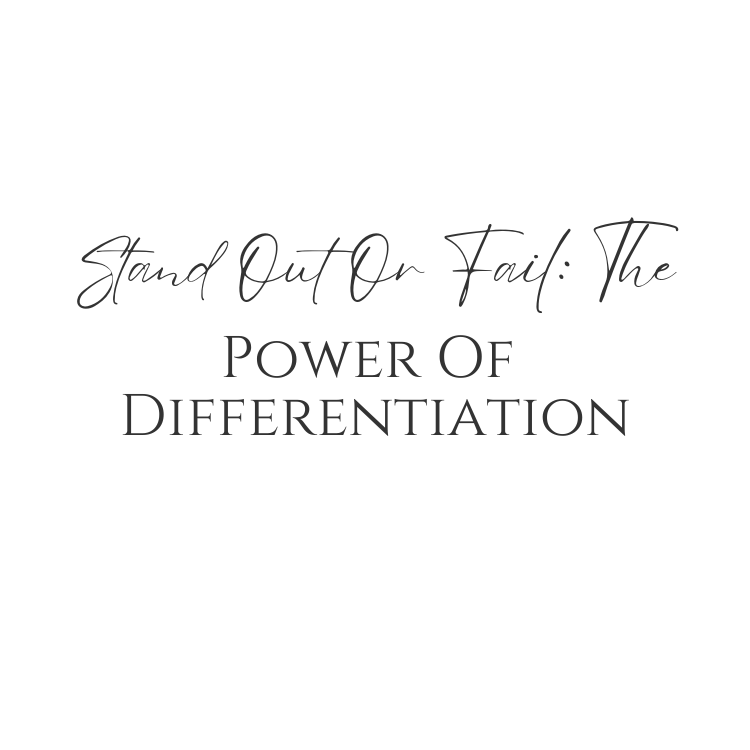Are you tired of blending in with the crowd? Do you want to be more than just another blogger lost in the vast sea of online content? Then it’s time to harness the power of differentiation.

Standing out from the masses is no longer a luxury, it’s a necessity. In fact, your success as a blogger depends on it. To truly succeed, you need to develop a Unique Selling Proposition (USP) that sets you apart from the competition.
But it’s not just about being different for the sake of being different. It’s about creating something worth talking about. Something that captures the attention of your readers and keeps them coming back for more.
In this article, we’ll explore why differentiation is essential for bloggers who want to stand out and succeed in today’s saturated world of online content. So buckle up and get ready to discover the power of differentiation.
Key Takeaways
- Developing a Unique Selling Proposition (USP) is crucial for bloggers to stand out and make a profit.
- Creating compelling content and building a community around your blog are essential for success.
- Focusing on a specific sub-niche or offering a different perspective on a topic sets you apart from the competition.
- Building a community through engagement and fostering a sense of belonging can help address pain points of target audiences and increase the chance of success.
Importance of USP
You can’t afford to blend in with the crowd in the blogosphere – remember, as the saying goes, ‘if you’re not the lead dog, the view never changes’. That’s why having a unique selling proposition (USP) that sets you apart from the pack is crucial for standing out and making a profit.

Creating a unique USP involves identifying what makes your blog different from the countless others out there. It could be your writing style, your area of expertise, or your approach to a particular topic.
Once you have created your USP, it’s important to communicate it effectively. Your USP should be clear and concise – if it takes too long to explain, people will lose interest. Make sure it is included in your blog’s tagline, and use it consistently in your marketing materials.
By effectively communicating your USP, you will attract readers who are interested in what you have to offer, and set yourself apart from the competition.
Positioning and Mindset:Stand Out or Fail
By considering how your blog can make a unique impact on the mind of potential readers, you can strategically position yourself in a way that sets you apart from the competition.

Positioning is all about how you want your blog to be perceived by your audience and how you can differentiate it from others in your niche. It’s important to have a clear understanding of your target audience and their needs, desires, and pain points. This will help you create a brand that resonates with them and stands out from the rest.
Understanding your competition is also crucial in positioning yourself strategically. By identifying what they’re doing well and what they’re not doing, you can find gaps in the market that you can fill with your unique selling proposition.
You can also differentiate your blog by focusing on a specific sub-niche or by offering a different perspective on a topic that’s already being covered by others. By positioning yourself in a way that sets you apart, you’ll be able to attract a loyal following and stand out in the blogosphere.
Building a Sticky Blog
Creating a blog that keeps readers engaged and coming back for more is essential for success, and according to a recent study, blogs that publish new content at least once a week see a 2.5 times increase in traffic. But it’s not just about frequency; the content must also be compelling and the blog must build a community around it. Building a sticky blog requires creating engagement with your readers and fostering a sense of belonging within your community.
To do this, it’s important to understand your audience and create content that resonates with them. One way to achieve this is by creating a table that outlines the needs and desires of your target audience in order to create content that addresses those needs. Another strategy is to encourage participation through comments and social media, making sure to respond to comments and engage with your audience. Building a community also means collaborating with other bloggers and sharing their content, as well as promoting your own content through social media and guest posts on other blogs. By creating engagement and building a community, your blog will stand out and keep readers coming back for more.
| Needs | Desires | Pain Points | ||||
|---|---|---|---|---|---|---|
| Information | Inspiration | Overwhelm | ||||
| Guidance | Connection | Procrastination | ||||
| Entertainment | Growth | Lack of Time | ||||
| Solutions | Recognition | Lack of Clarity | ||||
| Empathy | Support | Lack of Confidence | Motivation | Accountability | Fear of Failure |




